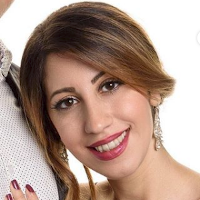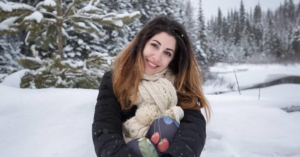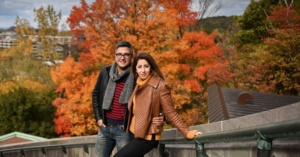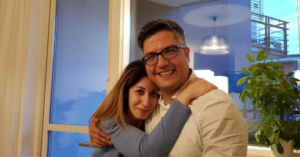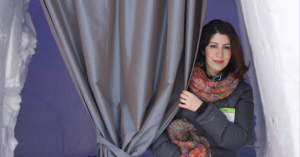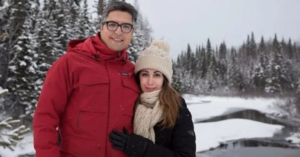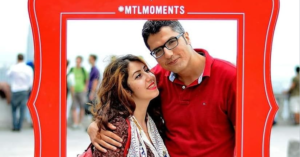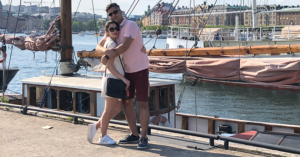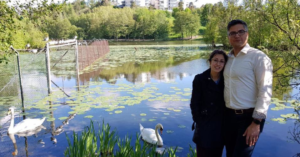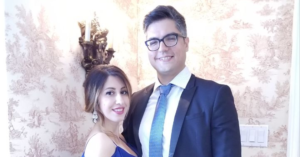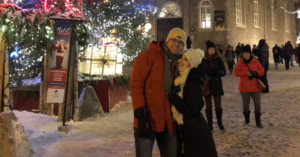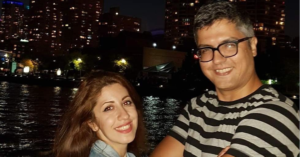Aida Farzaneh
Aida: Tree, Dagger, Memory
1. Aida: Tree, Dagger, Memory
Aida is sitting by a window in an old house, staring at the mountains of Kurdistan. Elnaz is standing further off. This is an immortal image. The last trip to Iran. To a village in Kurdistan.
Aida loved Iran. She loved the mountains of Iran, the kids of Iran, the crafts of Iran. Through all her years away from home, whenever she came back to Iran, she would buy handicrafts from a distant corner of her motherland, and take them to other places. Aida carried Iran with her. Aida spread Iran in a corner of her house. She sat on Iran, leaned on Iran, drank tea in Iran, put fresh flowers in a miniature, fragile Iran and looked upon it with pleasure. On the last trip, she bought Elnaz a Russian-style mirror and asked her sister to turn a corner of her house into Iran.
When Elnaz is feeling well, she likes to say that Aida dreamed of going back to Iran one day to teach at university. If Elnaz were able to go through her memories, she’d say, “I don’t know if Aida would like me saying this or not, but every month she sent donations to some kids in Iran.”
There are many pictures left of Aida, taken by Elnaz. There are memories left of Aida, in the care of Elnaz. There are the words exchanged between the two sisters. If Elnaz could go back through her memories, she could document them. Just like when she documented Aida by taking her pictures.
2. Aida, Moon, Abidar
Aida Farzaneh was born on November 9, 1986 in Sanandaj. She was three when Elnaz was born and the two sisters, the only children in the family, grew up together, studied together and finally emigrated together. After she got her architecture degree from Isfahan University, Aida decided to move to Sweden. The two sisters both got a university scholarship and moved there in 2008. Before their flight, the father gave Aida a letter. It was about life, love and hope. Daddy had asked “daddy’s daughter” to fall in love, because “love is the biggest gift of God to those on Earth.” It was the wisdom of her father that meant Aida’s kindness and empathy for humans knew no end.
Aida had met Arvin in her English classes before she left Iran. It had started there and continued in cafes in the mountains of Abidar, and remotely. In Sweden, their love was at its height. Aida had painstakingly drawn a portrait of Arvin and told Elnaz that he was the first person in her life. She was planning for her second migration: from Sweden to Canada. Aida had a masters degree in energy engineering from Sweden, and she then got an offer for a PhD in information modeling in Canada. She moved to Canada and married Arvin. Every day she FaceTimed her sister every day in Stockholm and her mother in Sanandaj. She’d speak of the ups and downs of remigration, of dorm life, of new experiences of common life, of progress in studies and university.
It was the winter of 2019. The 33-year-old Aida had spent 25 years of her life in school. She was now a researcher in a company, enjoying her new job. The life in dormitories, moving from house to house and country to country was now over. Aida and Arvin had built themselves a life in Montreal. Aida’s house was full of Iran and so was her heart. She decided that the daily FaceTiming with family should be replaced by a proper visit. Aida and Arvin thought the 2020 new year holidays were the best chance. They traveled back to their motherland, Kurdistan, and Elnaz joined them from Sweden. The restless hearts of their parents finally found solace. Their children ran to the mountains to gaze upon them and take in the scent of home. Aida’s picture was taken as she sat behind a window in a Kurdish mountain house.
On January 8, Elnaz’s flight to Sweden was three hours after Aida and Arvin’s. At the airport, they found out Iran had attacked American bases in Iraq. Aida was worried that Elnaz was alone on her flight. She made her promise not to read the news. The phone records show the details of their final conversation: Aida was sitting in the plane and told her sister that she was tired and wanted to sleep. She asked her again to turn off the internet on her phone and not to read the news. Aida was worried for Elnaz, for her parents, for her Iran. She remembered her father’s eyes at the airport and wondered how long it would be until she would see those eyes again. She put her head on Arvin’s shoulder and thought how glad she was that she wasn’t lonely on this trip. She could rest on the shoulder of her beloved.
3. Dreams turns to ashes
Around 6:30 am, on January 8, 2020, somewhere around Tehran, people saw a plane on fire, crashing to the ground. People saw dreams burning in the air, turning to ashes. Among these dreams were two that belonged to Aida: one of teaching in Iranian universities, and one of becoming a mother.
Aida and Arvin wanted to have a child together. Aida had spoken to Elnaz about it and now Elnaz’s heart harbored the dream of becoming an auntie. Before leaving for Iran, Elnaz had bought a set of infant clothes in Stockholm. She wanted her niece or nephew to wear them one day so that her own heart could melt with love.
The plane crashed and burned. The dreams of Aida were turned to ashes. The dreams of Elnaz were turned to ashes. Among the plane fuselage and the charred remains of its inhabitants’ dreams is a picture of an infant hat. It is part of the same set bought by an auntie in Stockholm, taken to Sanandaj, sent to Montreal. Alongside all the pictures that exist of the first moments of the crash, Elnaz found this one and kept it for herself.
In the picture, the hat is half-burnt, covered with pebbles, dust and burnt metal. Just like Elnaz’s heart.
Writer: Leyla Orand
Translator: Arash Azizi
Editor: Hannah Somerville
With the support of iranwire.com
